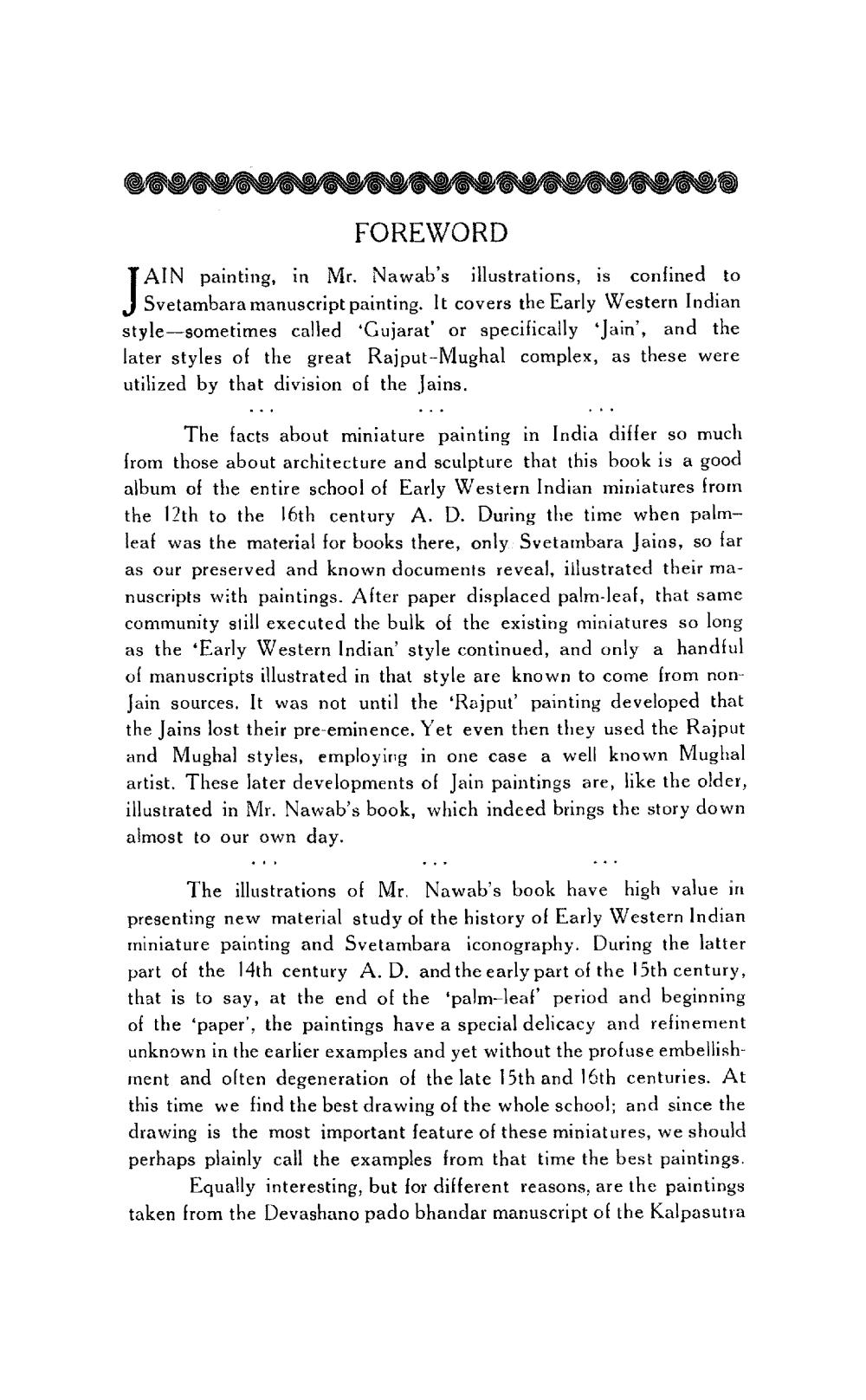________________
TUTULUU Bauerununua
FOREWORD TAIN painting, in Mr. Nawab's illustrations, is confined to
Svetambara manuscript painting. It covers the Early Western Indian style--sometimes called "Gujarat' or specifically Jain', and the later styles of the great Rajput-Mughal complex, as these were utilized by that division of the Jains.
The facts about miniature painting in India differ so much from those about architecture and sculpture that this book is a good album of the entire school of Early Western Indian miniatures from the 12th to the 16th century A. D. During the time when palmleaf was the material for books there, only Svetambara Jains, so far as our preserved and known documents reveal, illustrated their manuscripts with paintings. After paper displaced palm-leaf, that same community still executed the bulk of the existing miniatures so long as the Early Western Indian' style continued, and only a handful of manuscripts illustrated in that style are known to come from nonJain sources. It was not until the 'Rajput' painting developed that the Jains lost their pre-eminence. Yet even then they used the Rajput and Mughal styles, employing in one case a well known Mughal artist. These later developments of Jain paintings are, like the older, illustrated in Mr. Nawab's book, which indeed brings the story down almost to our own day.
The illustrations of Mr. Nawab's book have high value in presenting new material study of the history of Early Western Indian miniature painting and Svetambara iconography. During the latter part of the 14th century A. D. and the early part of the 15th century, that is to say, at the end of the 'palm-leaf' period and beginning of the 'paper', the paintings have a special delicacy and refinement unknown in the earlier examples and yet without the profuse embellishment and often degeneration of the late 15th and 16th centuries. At this time we find the best drawing of the whole school; and since the drawing is the most important feature of these miniatures, we should perhaps plainly call the examples from that time the best paintings.
Equally interesting, but for different reasons, are the paintings taken from the Devashano pado bhandar manuscript of the Kalpasutra




